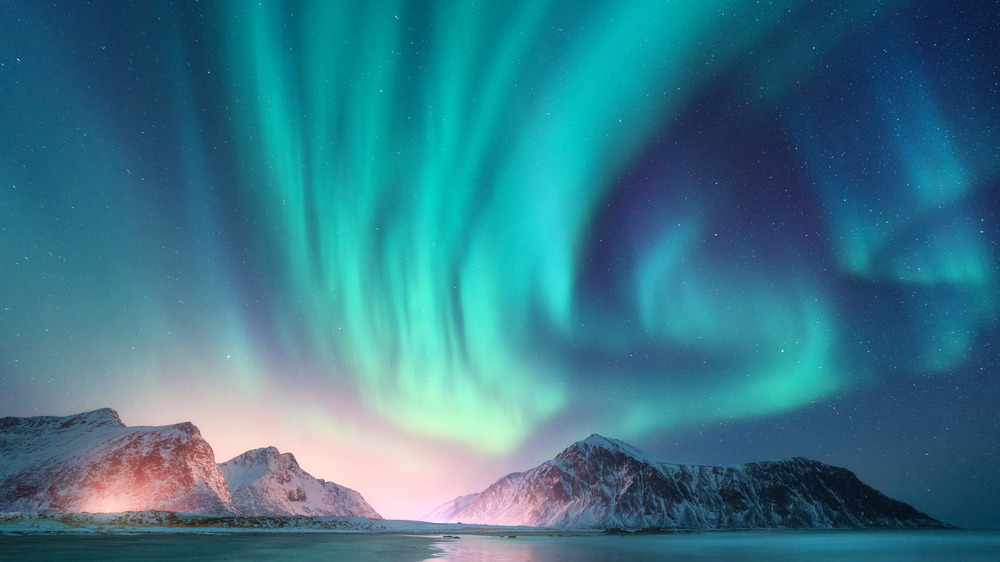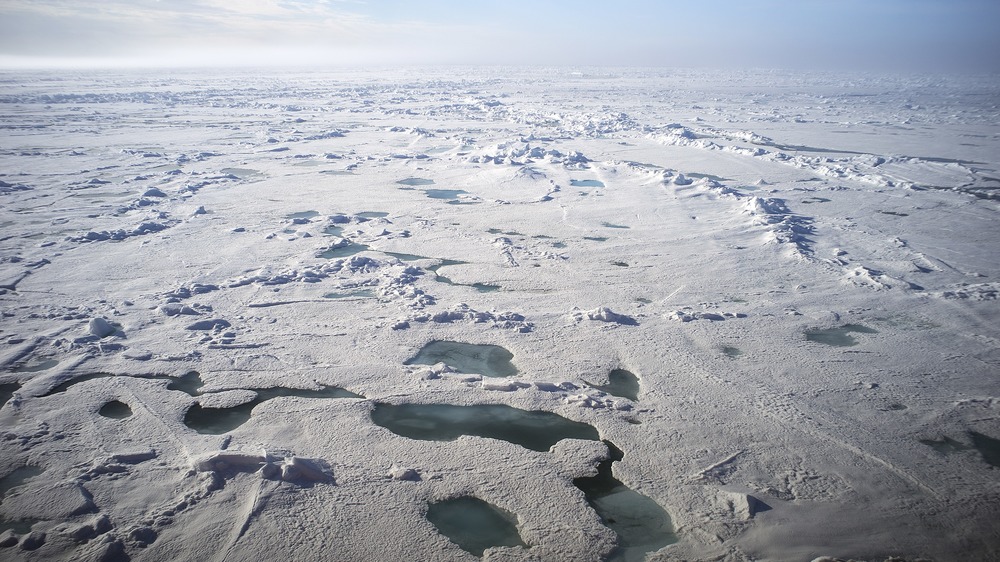A Look At The Mysterious Sounds Of The North Pole
As the furthest point north on our planet, and one tip of the Earth's magnetosphere, the North Pole is devoid of any landmass, full of nothing but shifting, sometimes traversable, chunks of ice. It's a region that tends to carry mystique, convey mystery, and beg for explanations. If you close your eyes and imagine, it might be easy to hear in your mind's ear what it sounds like: torrents of wind buffeting the craggy peaks of icebergs; the snow on the occasionally flattened slabs between your feet crunching as the ice beneath squeaks and creaks.
And of course, "pings," "hums," or "beeps" that scare away wildlife and are blamed on "sonars in the seabed" planted by Greenpeace, per the CBC. Or, you know, aliens.
Okay, that last one isn't a typical polar sound. But, it has been reported in the Arctic, at least near the Inuit hamlet of Igloolik in Nunavut in northern Canada. Also on record: crackling, staticky hissing comes from auroras, as outlined on National Geographic. No mention of any jingling bells or "ho, ho, hos" echoing in the dark, though.
Bear in mind that this is the region of Earth being struck by an anomalous microwave emission (AME) since the '90s that is likely "tiny, ultrafast-spinning grains of cosmic dust," as Live Science says, left over from the Big Bang. The Arctic seems inherently rife with unexplainable phenomena, and is alien to all but its inhabitants. In the case of the aforementioned strange sounds, however, we've got concrete explanations.
Unearthly sounds of mundane origins
Let's first take a look at the pinging, humming, beeping sound near Igloolik, specifically in the Fury and Hecla Strait. Per the BBC, the sounds haven't been 100 percent identified, but they've been a tremendous cause of concern for locals, according to legislative assembly member Paul Quassa. The strait is a polynya, or an "area of open water surrounded by ice that's abundant with sea mammals," and people rely on it for hunting. The usually busy, migratory route for whales and seals, however, has been suspiciously empty of wildlife, leading some to blame Greenpeace (as mentioned), while others have blamed mining companies or military submarines (and, yes, UFOs). The sounds are so loud that they can apparently be heard on the surface through the hulls of ships. The Canadian military has mobilized submarines and aircraft to check it out, but as the National Post tells us, the most likely culprit is simply ice rubbing together.
And the strange sounds coming from auroras? Well, they grow in intensity when auroras are at their strongest, visibly, and hover about 70 meters off the ground. "Inversion layers" in the atmosphere are the postulated cause, whereby temperature increases with altitude, rather than decreases as usual. Inversion layers develop after clear, sunny days, when heat rises quickly and traps negatively charged particles beneath it. Then, if the sun is particularly active, it creates geomagnetic storms on Earth that "break" the inversion layer and release the trapped particles: snap, crackle, pop.

